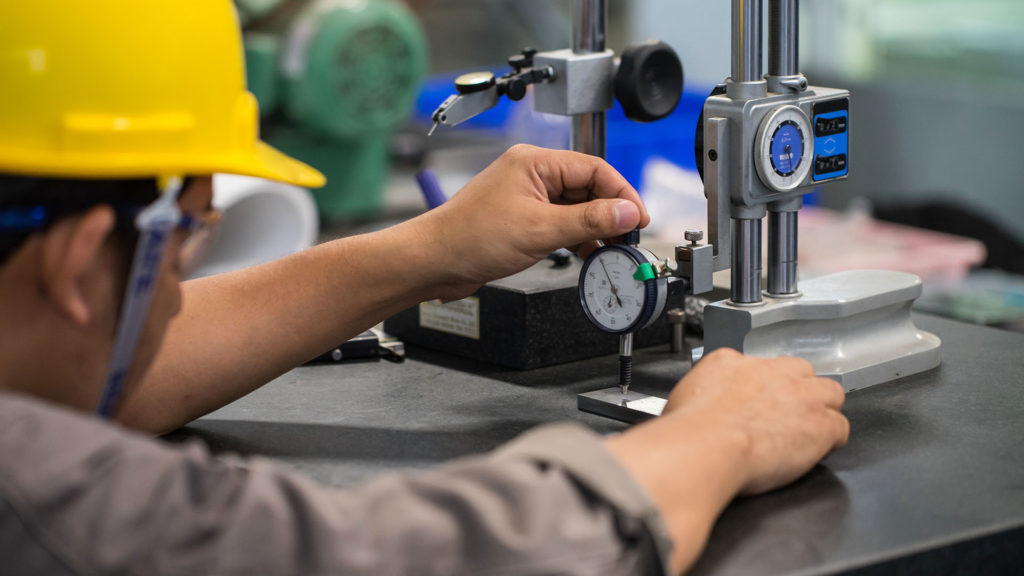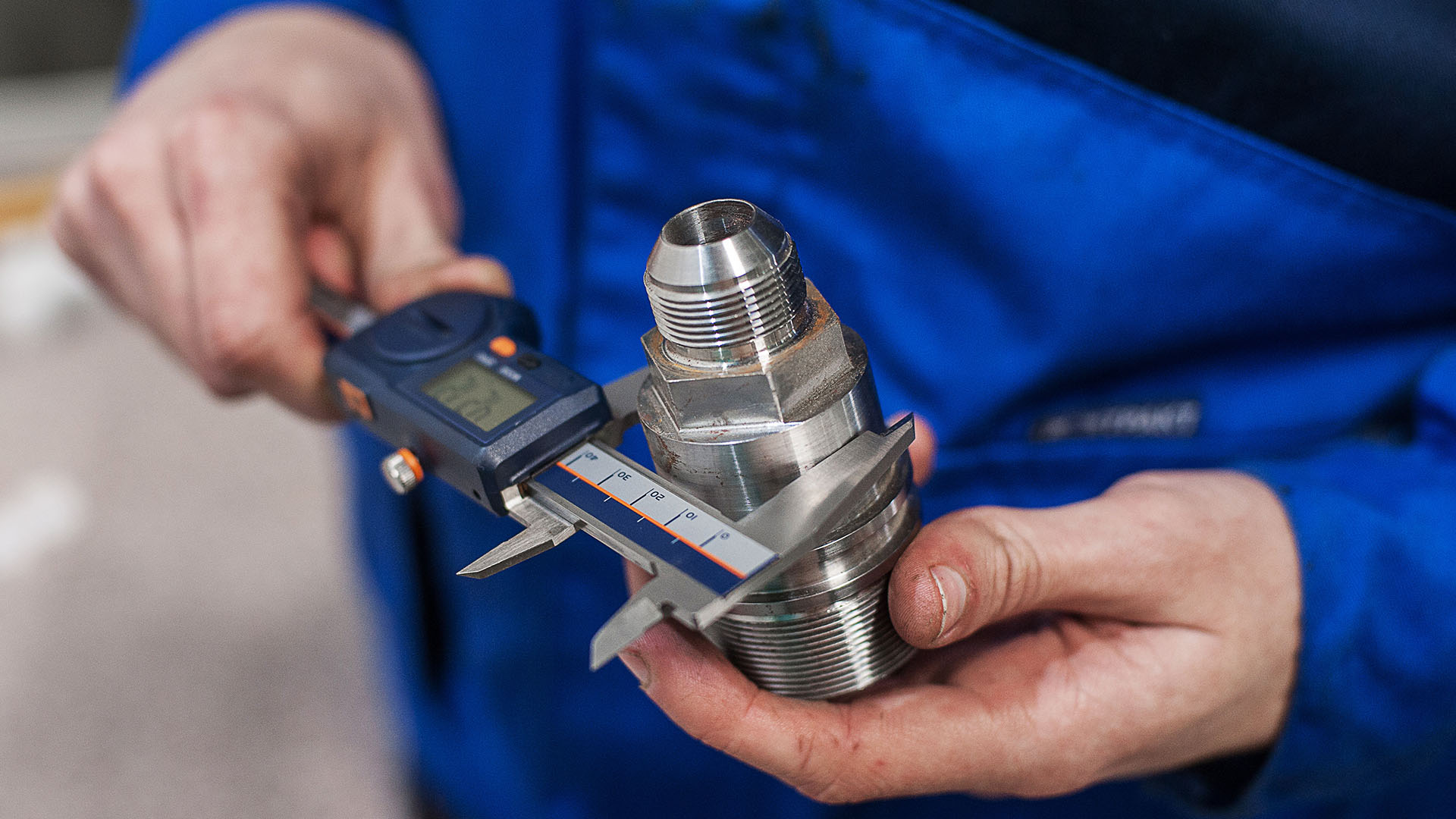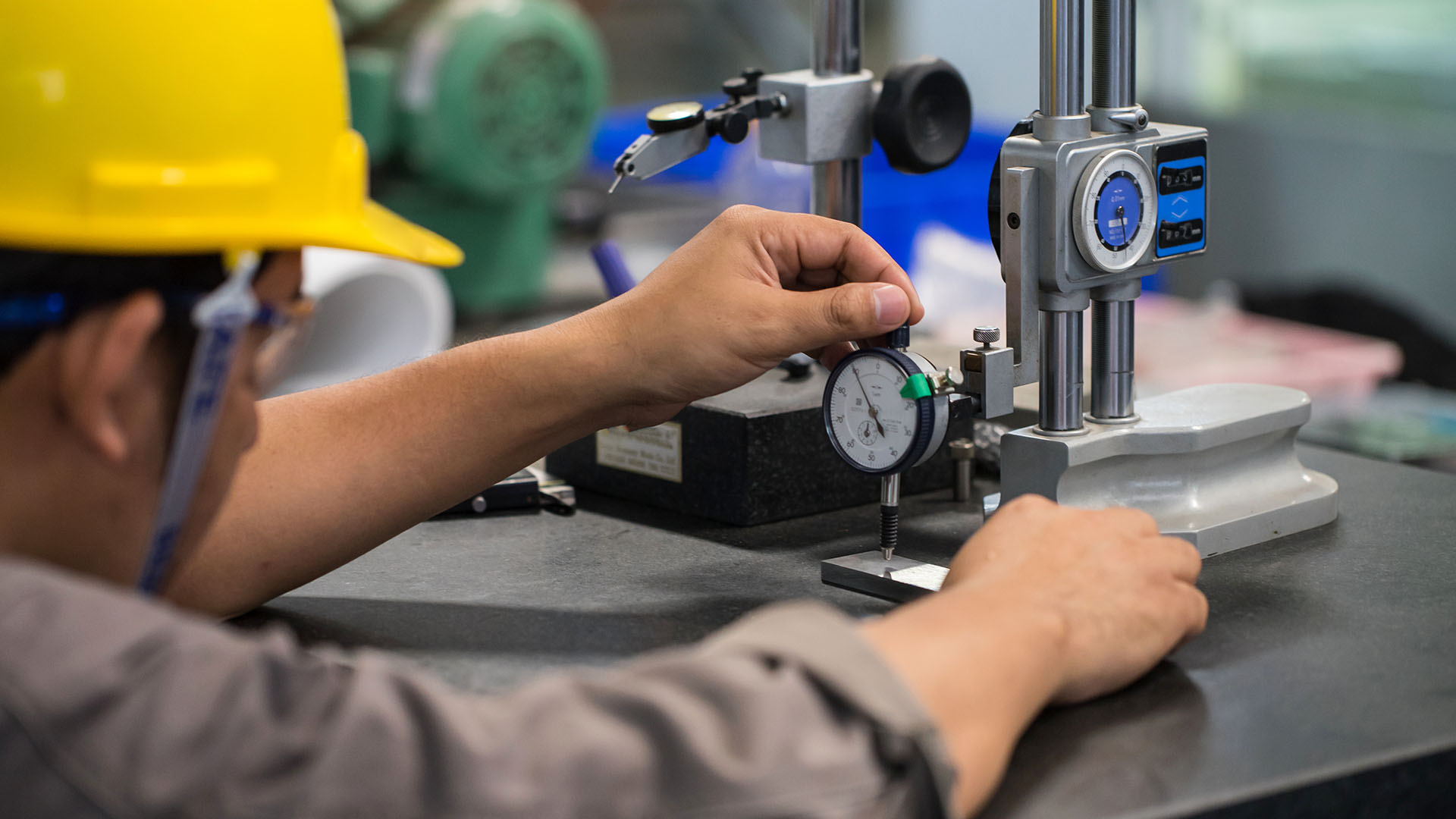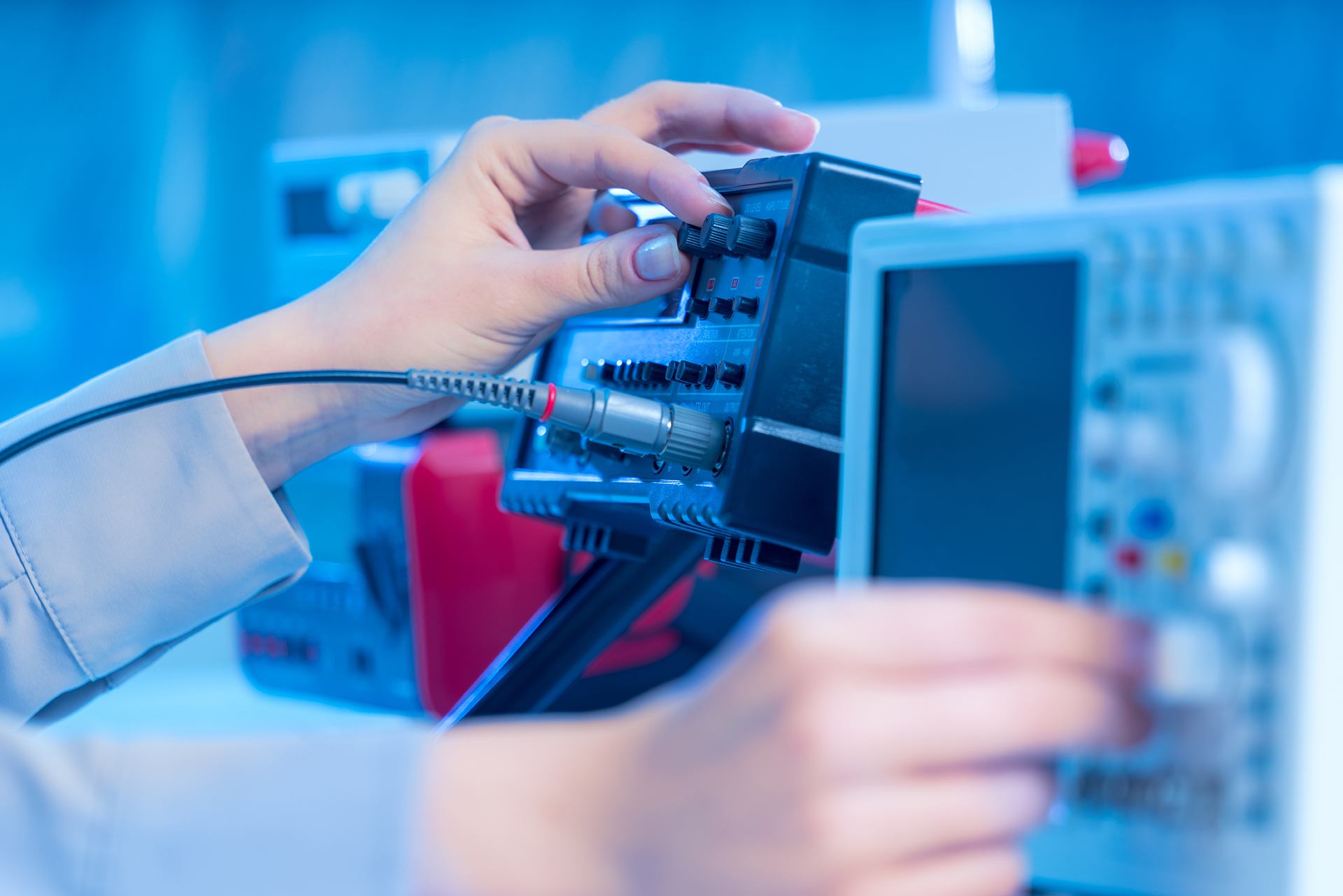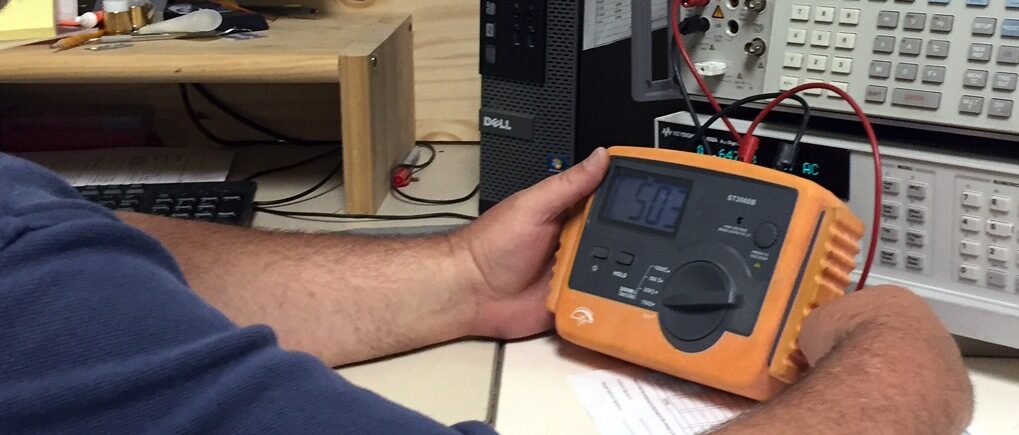To electronically calibrate a multimeter, start by ensuring a stable environment. Follow step-by-step procedures for each function. Focus on capacitance, direct current, etc. Make sure to align with national and international standards for precise measurements. As you dig into the process, you’ll discover the importance of proper calibration in correcting errors and improving accuracy. Remember, electronic calibration plays a vital role in maintaining the precision of your multimeter. Keep exploring to uncover more insights into mastering the calibration process effectively.
Multimeter Calibration Overview
When calibrating a multimeter, understanding the basics of the process is essential to guarantee accurate measurements. Digital multimeters require periodic calibration to maintain precision. The calibration interval may vary based on specifications and usage.
Using a precision voltage reference and traceable calibration standards assures your multimeter remains accurate. Calibration procedures involve selecting the right calibration equipment and following a precise calibration routine in a calibration lab. You ensure reliable measurements by aligning your multimeter with national and international standards.
An accurate multimeter is essential for safety and efficiency in various industries. Following a meticulous calibration process, which includes testing, calibrating, and reporting, is paramount. Remember, for trustworthy results, always opt for traceable calibration methods to uphold the integrity of your measurements. Prioritize safety and accuracy by adhering to recommended calibration practices for your digital multimeter.
Importance of Electronic Calibration
Understanding the importance of electronic calibration guarantees that your equipment operates with utmost precision and reliability. Regular calibration ensures your multimeter meets the required specifications and functions accurately.
Understanding calibration frequency is essential; yearly calibration is standard, but intervals may vary based on specifications, environment, and use. Following specific calibration procedures, such as uncertainty analysis and calibration sequences, and choosing standards like regulatory guidelines ensures accurate calibrations.
Deadweight testers provide precise pressure calibrations, contributing to the reliability of your equipment. Outsourcing calibration services to experts saves time, ensures regulatory compliance, and maintains equipment integrity. Expertise in calibration is critical, demanding attention to detail and adherence to strict standards.
Choosing the Right Calibrator
Selecting the appropriate calibrator that matches your digital multimeter’s specifications is vital to guarantee precise calibrations. The calibrator specifications should be at least four times more accurate than your DMM specifications, ensuring precision.
The calibrator functions must cover the same features as the DMM being calibrated for proper alignment. Fluke Calibration offers resources to assist in selecting the best calibrator, and the Electrical Calibrator Workload Matrix summarizes calibrator functions and accuracies, aiding in your decision-making process.
When considering calibrators, ensure they can perform capacitance, DC, and AC calibrations as needed. If necessary, outsourcing calibration services to experts may guarantee precise results and compliance with standards, saving you time and effort.
Be sure to thoroughly assess the calibrator’s capabilities and match them with your multimeter’s requirements for successful calibrations.
Calibration Sequences and Procedures
Understanding the calibration sequences and procedures is essential for guaranteeing accurate measurements with your digital multimeter. Calibration sequences vary based on the calibration state and customer requirements, encompassing calibration only, adjustment first, post-adjustment calibration, pre-adjustment calibration, adjustment, and post-adjustment calibration. Following precise calibration procedures is vital for maintaining accuracy.
The step-by-step calibration process covers direct voltage, alternating voltage, resistance, capacitance, and direct current measurements. Detailed instructions are provided for each function to ensure proper calibration. Electronic calibration aligns your device with national and international standards, guaranteeing accuracy. It involves choosing a standard, testing, calibrating, and reporting, with uncertainty analysis critical in ensuring precise measurements.
Proper calibration corrects any span and has zero errors, promoting reliable equipment operation. If outsourcing calibration, ensure the service provider adheres to strict standards, saving time and ensuring regulatory compliance while maintaining accuracy when you calibrate a multimeter.
Specific Calibration Instructions
For precise digital multimeter calibration, follow these instructions to guarantee accurate measurements. Before beginning, ensure your multimeter is in a stable environment free from electrical interference. Select the appropriate calibration sequence based on the calibration state and customer requirements.
Each step is vital for accuracy, whether it’s critical only, adjustment first, post-adjustment calibration, pre-adjustment calibration, and post-adjustment calibration. Proceed with the calibration process by following step-by-step procedures for direct voltage, alternating voltage, resistance, capacitance, and direct current.
Pay close attention to specific calibration procedures for capacitance, direct current, alternating current, and deadweight testers. Electronic calibration aligns your device with national and international standards, ensuring precise measurements.
Purpose and Benefits of Calibration
Guarantee your equipment operates flawlessly by understanding the significance and advantages of calibration. Regular calibrations ensure accurate measurements, improving equipment reliability, which is essential in industries like aerospace and medicine.
Calibration benefits include correcting tolerances, enhancing precision calibration, and boosting overall reliability. Adhering to calibration standards is critical, demanding certified calibrators to meet high precision requirements.
The calibration frequency depends on equipment age and environmental conditions, ensuring the best performance. Outsourcing calibration services can save time and money, providing expertise and adherence to regulatory standards.
Trusting specialized companies ensures precise results, cost-effective maintenance, and operational efficiency. Calibration, an investment in equipment upkeep, corrects errors, improves accuracy, and aligns devices with strict calibration intervals.
Embrace calibration procedures to safeguard accurate readings, equipment longevity, and operational safety through electronic calibration alignment with international standards.
Outsourcing Electronic Calibration
To streamline your calibration processes and guarantee regulatory compliance, consider the benefits of outsourcing electronic calibration services. Outsourcing electronic calibration saves money, provides expertise, and ensures time efficiency.
Trusting specialized companies guarantees adherence to strict regulatory standards and expert services. Proper calibration is an investment in equipment maintenance costs, and outsourcing calibration services saves employee time, reducing operational losses.
Quick on-site services with a fast turnaround time minimize equipment downtime, ensuring your operations run smoothly. Professional calibrators possess extensive knowledge and attention to detail, meeting specific regulations with honesty and exceptional documentation skills.
Training employees for calibration is time-intensive, making outsourcing a more efficient option. Calibrators must be certified to satisfy strict standards, and partnering with accredited entities like MicronPA demonstrates a commitment to quality and regulatory compliance.
Expert Tips for Digital Multimeter Calibration
Guarantee the accuracy and reliability of your digital multimeter by following expert guidance on electronic calibration. Choosing the suitable calibrator, understanding calibration frequencies, and following specific procedures will help you maintain precise measurements in various industries.
By aligning your devices with national and international standards, you can ensure that your equipment operates without errors. Pay attention to the importance of calibration for accurate readings and reliable equipment operation.
Ready to kickstart your journey to precision? Elevate your calibration game with EML Calibration. Trust our expertise to align your multimeter with national and international standards, ensuring accurate measurements every time. Contact us today to unleash the full potential of your equipment!

